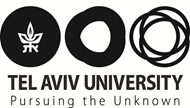In Memoriam
In Memoriam
Professor Enrigue Grunbaum
 Enrique had many friends from many different countries and different periods of his life. He loved people and his friends loved him as a person - a mensch as many of them said - and respected him as a scientist of international standing. Enrique was an exception in the ultra-competitive world of modern science. He was completely un-selfish, always more concerned that others would be recognized for their work than he would be for his own. He would always take care that students, technicians, young and senior scientists get the distinctions they deserved, while never boasting of his own accomplishments.
Enrique had many friends from many different countries and different periods of his life. He loved people and his friends loved him as a person - a mensch as many of them said - and respected him as a scientist of international standing. Enrique was an exception in the ultra-competitive world of modern science. He was completely un-selfish, always more concerned that others would be recognized for their work than he would be for his own. He would always take care that students, technicians, young and senior scientists get the distinctions they deserved, while never boasting of his own accomplishments.
Tel Aviv University owes much to Enrique for its standing in key areas such as nano-sciences. Had it not been for his contributions, I doubt that the University would have succeeded in establishing the Wolfson Center for Applied Materials Research, which provided the foundation for the Nano-Science Research Center. I also doubt that the University would have been authorized to establish an undergraduate curriculum in Material Science.
We met in the fall of 1971, when Enrique made Aliyah from Chili and I from France, both of us having been offered a position by the late Yuval Ne'eman. We discovered that we had a common distant past, both of us having escaped from Germany shortly before the war broke out. Maybe this helped us to establish instantly a warm and effective relationship. At that time, the University did not provide startup money, which in a way forced us to define very carefully what we wanted to achieve. Enrique was already a well-known Electron Microscopist - but he did not receive funds to buy an Electron Microscope, and was barely given access to that in use in the Faculty of Life Sciences. Nevertheless we quickly set out to start a research project of common interest. I was interested in the properties of recently discovered cermet composite thin films made of nanometer size aluminum grains in an oxide matrix. Understanding their special electronic properties required the fundamental knowledge of the grain size distribution. Enrique knew exactly how to do this, using dark field electron microscopy by which one could distinguish from a complex background grains diffracting in certain directions, and thus measure their size.
We started our work thanks to the help of an electron microscopist at Bar Ilan University (Max Herzberg) , who agreed to let Enrique use his microscope. Our work was successful and marked the beginning of modern experimental solid state physics and materials engineering at Tel Aviv University. Our initial publication is still quoted today.
Later we bought together a second hand electron (transmission) microscope that Enrique had located, and finally a scanning electron microscope. We shared lab space in the basement of the Physics building, after arrangements were made between the Deans of the Faculty of Exact Sciences and the Faculty of Engineering. This was interdisciplinary work before the name became fashionable, and many years of intense and fruitful collaboration followed. Enrique taught electron microscopy to several generations of graduate students. When the time came, two of them (Yossi Lereah and Zahava Barkay) were ready to hold key positions in a Materials Research Center whose establishment several of us proposed to the Wolfson Foundation. This proposal was successful. Later on the Wolfson Applied Materials Research Center, now equipped with modern microscopes, provided a solid foundation for the establishment of the Nano-Sciences Research Center at Tel Aviv University.
But the contributions of Enrique to the development of materials research in Israel go well beyond his work at Tel Aviv University. He was a founding member of the Israel Society for Microscopy and of the Israel Society for Vacuum Sciences (previously the Israel Vacuum Society). He was entirely dedicated to the development of electron microscopy and materials sciences in Israel, including the establishment of strong links with leading scientists abroad. He kept abreast of recent developments, attending seminars and visiting advanced laboratories abroad. His help was very much appreciated at the Weizmann Institute where he spent one day per week in the laboratory of Reshef Tenne.
Enrique often spoke to us of his family, his children and grand-children, of which he was very proud. I wish to express to them our sorrow for the great loss they have suffered. They should know how much his work at Tel Aviv University has been extraordinarily important and successful. We will all miss him dearly.

